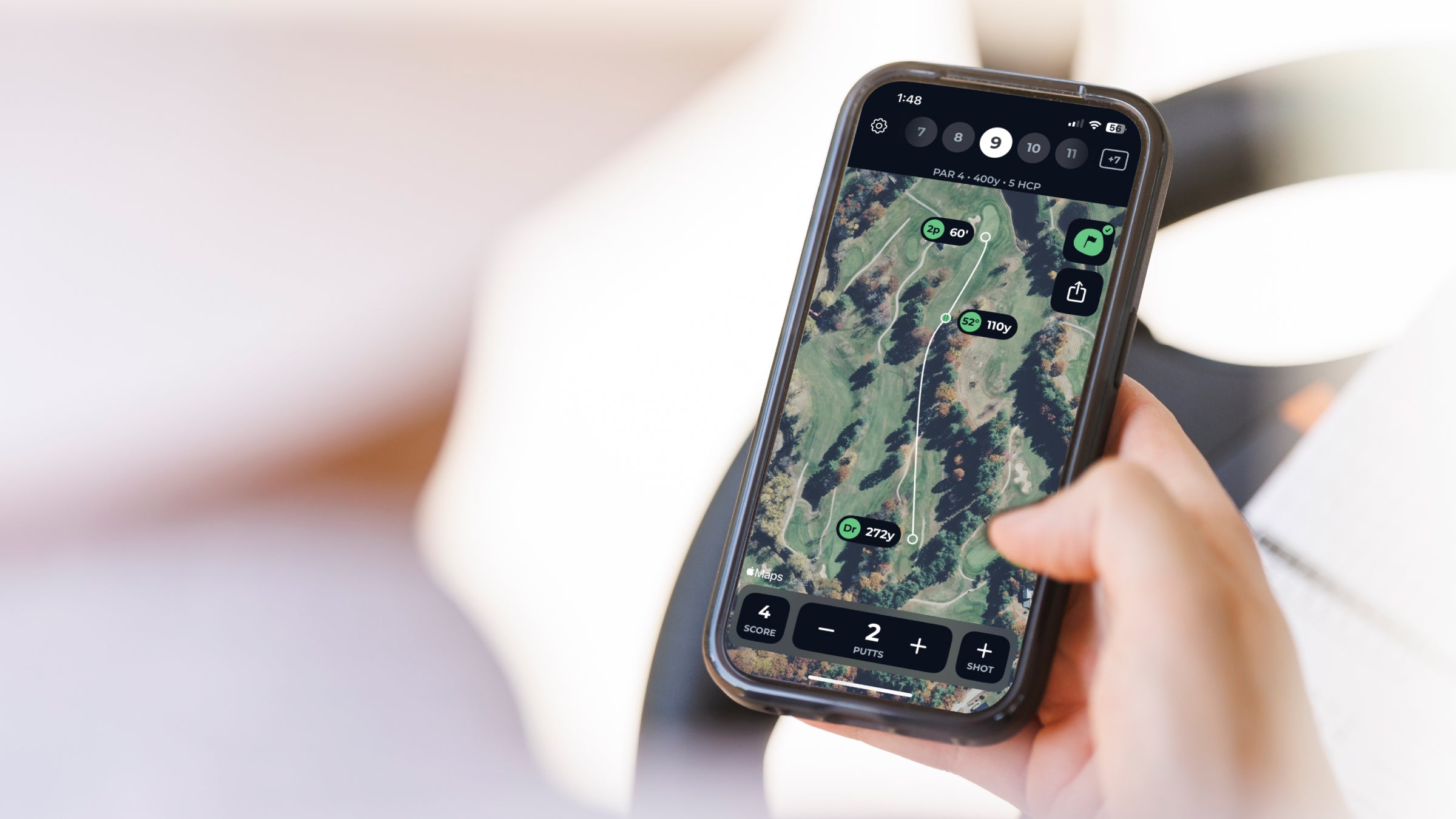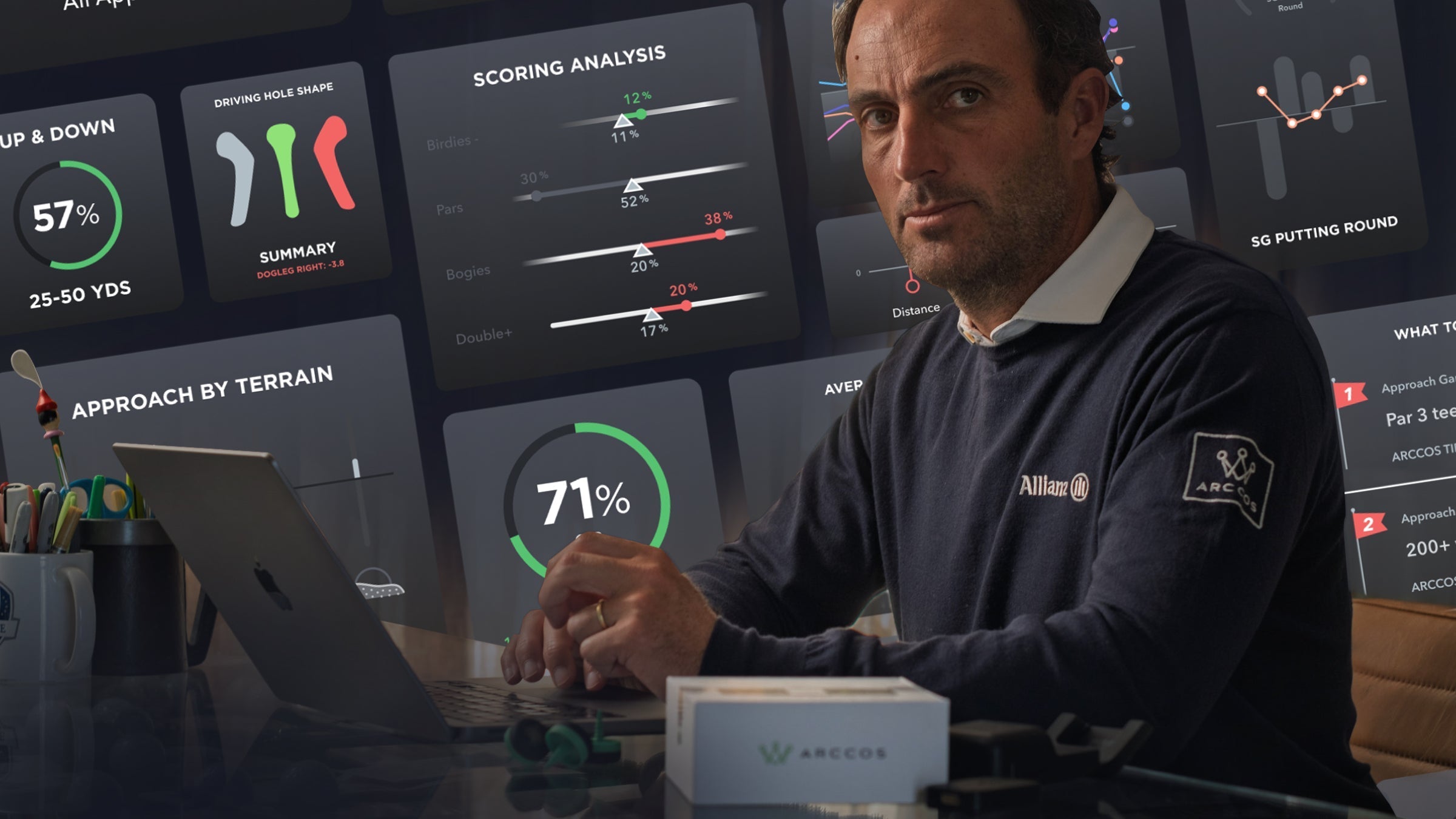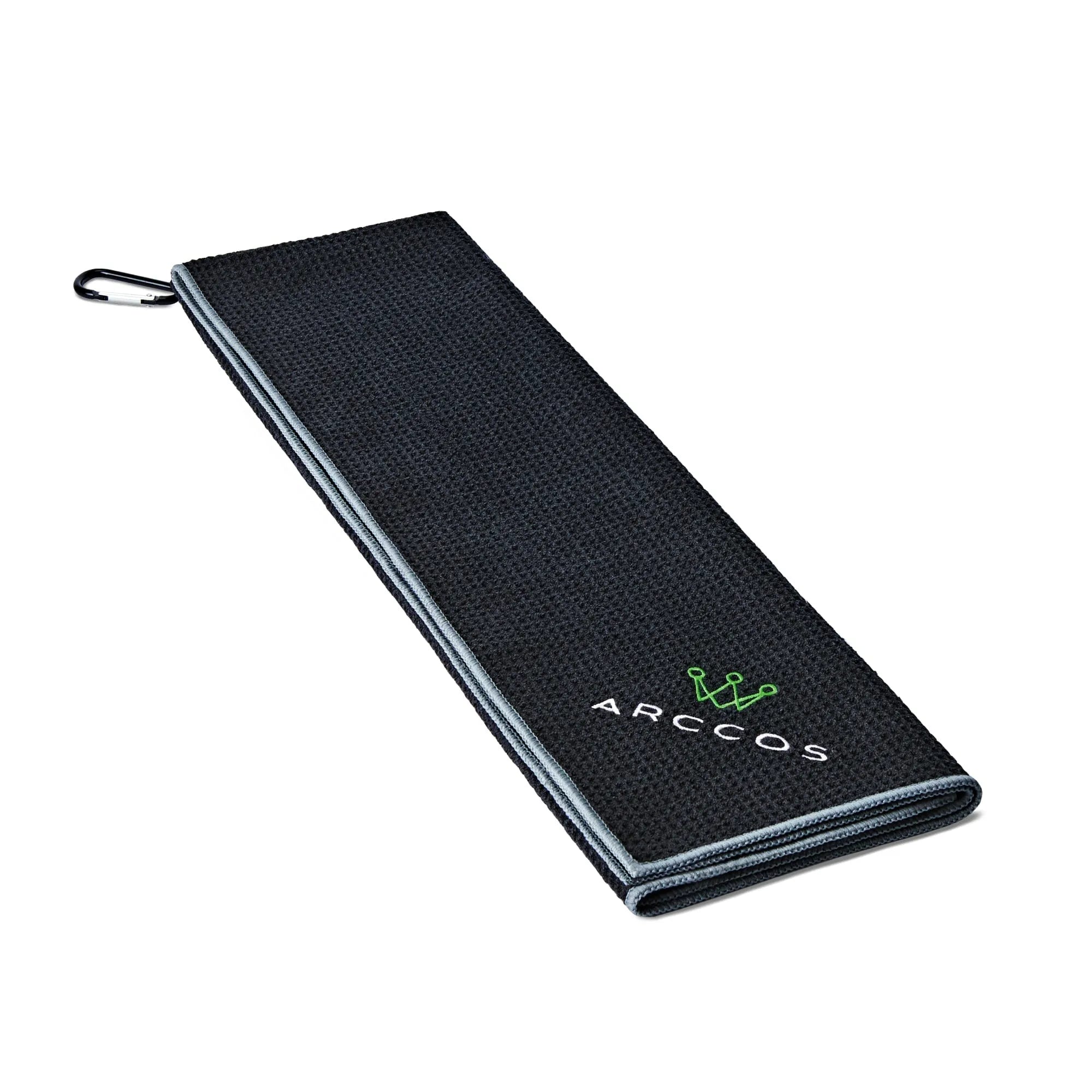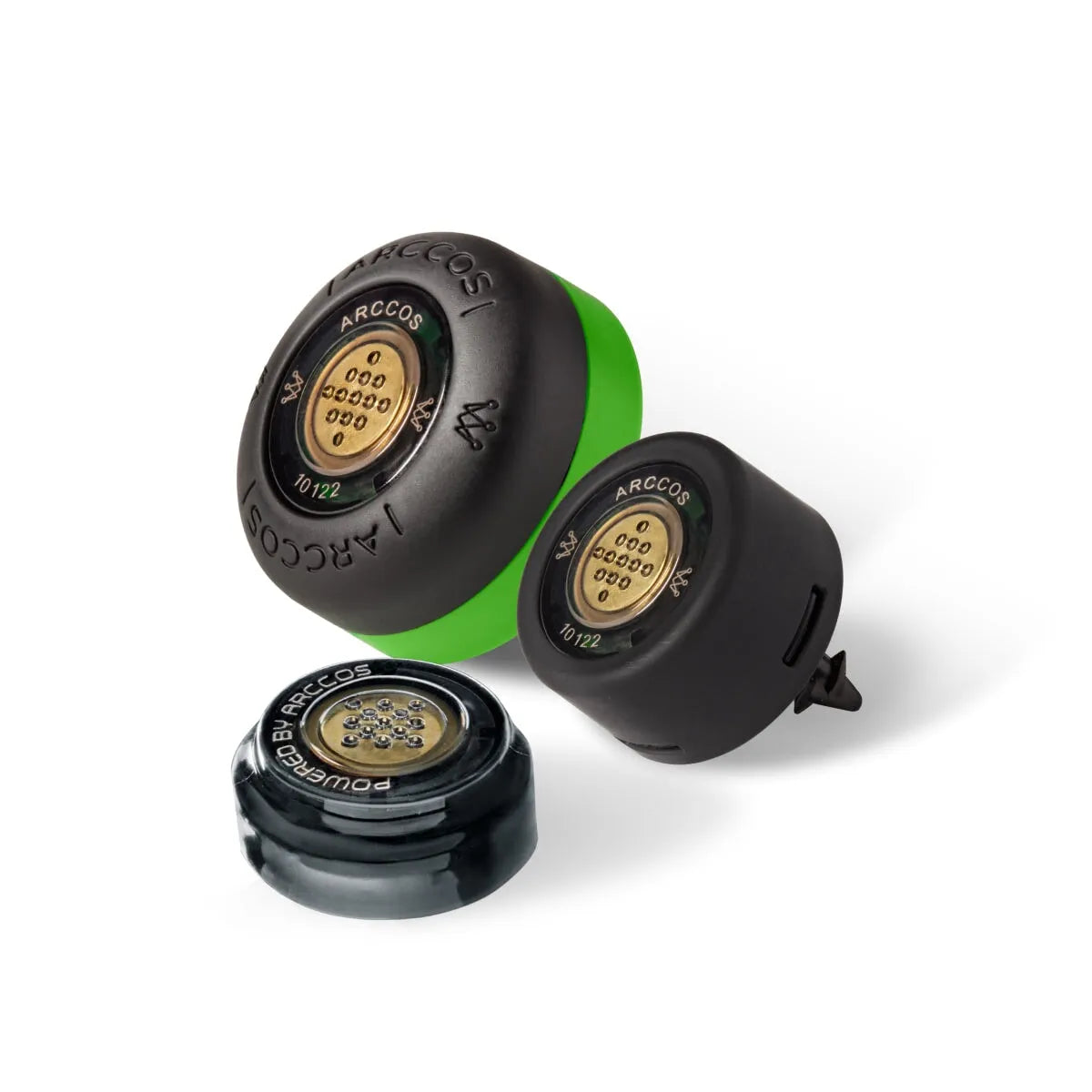
It’s always been a dream to make a USGA event.
Growing up, I came close more than once, a missed putt here, a single stroke there, but never enough to cross the line from hopeful to qualified. Once college golf ended and life moved on, that dream drifted somewhere between maybe someday and probably not. A torn labrum didn’t help either so, I took a break. For the first time in over a decade, golf wasn’t front and center.
The love for the game was still there, but the urge fizzled to practice or play. It changed when we moved to Connecticut and I started working at Arccos though. Being surrounded by golf again was like working in a candy shop where you can only resist for so long. I found myself having a range session again, tracking a few rounds, then more. What hooked me wasn’t just playing, but seeing my game in data. Every round mapped out. Every number telling a small story. For someone whose post-round memory is about as short as Dory from Finding Nemo, it became a really cool “yearbook” of rounds to look at. I was seeing my progress again.
A few years later, that familiar itch to compete came back. I wanted to see if I could still do it, if the instincts for competitive golf were still there. In 2024, I qualified for my first USGA event, the U.S. Women’s Mid-Am at Brae Burn outside Boston. It was everything you would expect from the USGA, organized, pristine, intense. Might have been the best piece of candy I ever had...super sweet! So when I heard the 2025 Mid-Am would be at Monterey Peninsula Country Club, I set my sights there... Willy Wonka's Golden Ticket.
This time, was going to be tougher though... The field was the largest in Women’s Mid-Am history, a mix of seasoned veterans and younger, sharper competition. My qualifier in Memphis had only one spot to fight over, played in the kind of humidity that makes your glove feel like a soggy paper towel. I grinded out a 76, good enough for first alternate. Close, again.
Then came the waiting.
Six weeks after waiting for the last qualifying location to conclude and to finally get the re-allotment list and see where I stood on chances of getting in. Before an email could even be sent out to all the alternates though, a New Jersey number popped up on my phone.
“Hi, Ciara? This is David Miller from the USGA.”
Before he could finish, I knew. I was in. The first alternate to get the call.
My stomach dropped, then flipped into a grin. I told him, half-joking, “This must be what the Ryder Cup guys feel like when they get the captain’s pick.” He laughed. I said yes immediately, called my family, then sat there for a minute just taking it in. I was headed to Monterey.
Arriving in Monterey
The air in Monterey feels different. Cooler, heavier, but clean, like it carries the ocean with it. Driving into Pebble Beach, fog rolled over the cypress trees and the Pacific peeked through in flashes. Monterey Peninsula Country Club sits right on that edge, where fairways meet cliffs and you can’t tell where the wind begins or ends.
The first practice round started before sunrise, and just as the sky lightened, the clouds broke open. Rain, in a place that apparently hadn’t seen it in three months. My father-in-law, who was on the bag, sprinted into the pro shop for an umbrella while I stood under an awning, laughing at the timing. By the time we reached the 12th tee, the fog had lifted, the rain slowed, and the coastline appeared, mist rising off the rocks, waves cutting against the shore. It stopped me for a second. I had made it.

Stroke Play - Day One
The USGA does things right. Your name displayed on the range, a choice to practice with Pro V1s or Pro V1xs, perfectly organized… everything. There’s an energy to it, quiet, serious, but welcoming.
It was a dual tee start, either 1 or 12. I started on hole 12. The opening stretch was steady, a few stress-free pars, until 17. I caught a 4 hybrid thin and watched it nose-dive into the face of a bunker about seventy yards short. One double later, the scorecard looked a little different.
Then, a few holes later, I was faced with the same club… took a breath, and flushed it. Birdie. Small redemption, but enough to settle back in.

I finished the day with a 75.
Back at the rental that night, I pulled up my Arccos data to see how things looked. I thought my irons had carried me, but the numbers told another story. I had gained strokes off the tee and on the greens but lost more than two on approach. It’s funny how easily your perception can blur during a round. Those little misses that didn’t feel like much at the time had quietly added up. The data didn’t sugarcoat it. It was humbling, but also clear, exactly what I needed heading into day two.

Stroke Play - Day Two
The next morning felt different. Calm, but focused. Starting on hole one just felt right, the marine layer still hanging over the course. I figured I’d need another 75 or better to make the cut, just based off historic rounds of Mid-Am Championships. I took a deep breath, teed it up, and went to work.
The front nine was a little shaky, a few bogeys, a double on eight after a high flare into the sandy dunes that lined the course. But then came nine, a par five that runs toward the ocean. The air smelled like salt and pine. I striped a drive, hit a clean five wood, and left myself ninety yards in. The wedge landed thirteen feet right of the pin. The putt dropped. Birdie.
From there, I settled in. Another birdie on eleven, then a string of solid pars. On eighteen, I found the bunker short but splashed it out clean, tapped in to close the round out with a par, and signed for 74. I played the last 10 holes, 2 under…

When I walked off the green, my family didn’t say anything. They didn’t have to. I could tell by their faces. I had made the cut at T-28, and I was on my way to match play.

Match Play
Match play has a totally different pulse. The crowd thins out, the range goes quiet. More than half of the field of women were gone. You can hear the sound of shoes brushing the grass and volunteers whispering. I was matched against Jennifer Wang. The official starter called our names, and just like that, we were off to the races.
I went four down early, fought back to one after eleven, then lost two straight to her birdies. She closed me out on fifteen. Tough, but a good match.
Five days at Monterey, my father-in-law carrying the bag and my family walking alongside. A week of fog, wind, and fairways that looked like art. I left tired, sore, but satisfied, overall the good kind of tired.
And, in a small-world moment, Jennifer’s dad, who was on her bag, turned out to be an Arccos member. So even after losing, I couldn’t help but root for her the rest of the way.
As I think through my match, maybe it was my swing, maybe it was mental, maybe I wasn’t playing as smart as I could… I do know it felt great to be in the mix and compete again though.
Looking Back
When I started this whole thing, I just wanted to make it into one USGA event. Now, I’ve done it twice.
Golf has this way of pulling you back in when you least expect it. Monterey reminded me of that. The fog, the ocean, the nerves, the small victories, they all blur together into something that sticks.
And next time, maybe I’ll go a few matches further.






Share:
Arccos Editing Guide: Set Pin, Add Penalties, Mark Chips & Fix Terrain